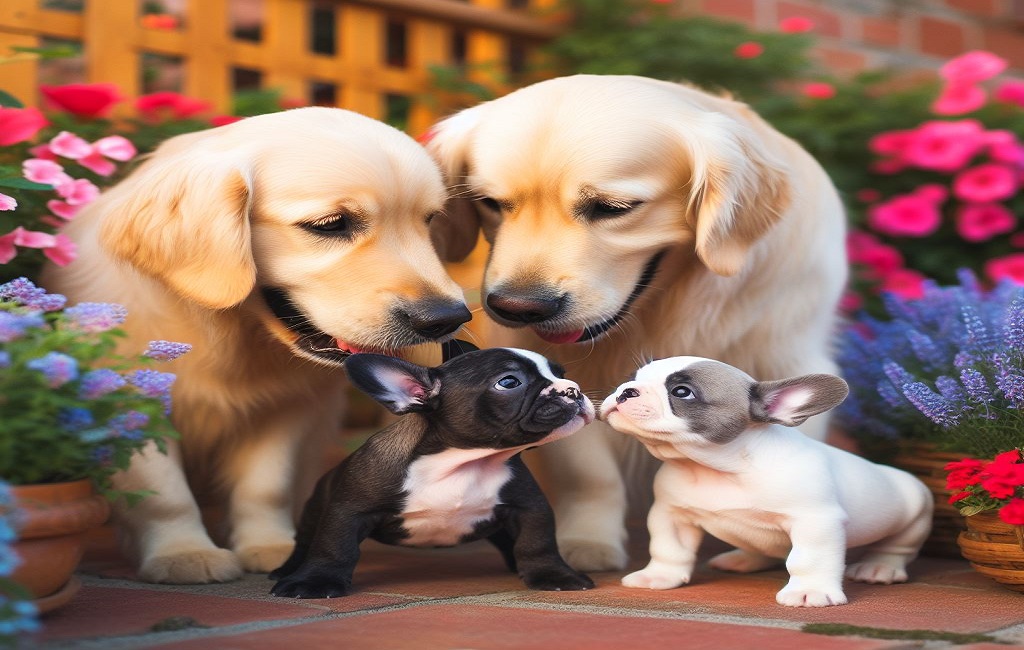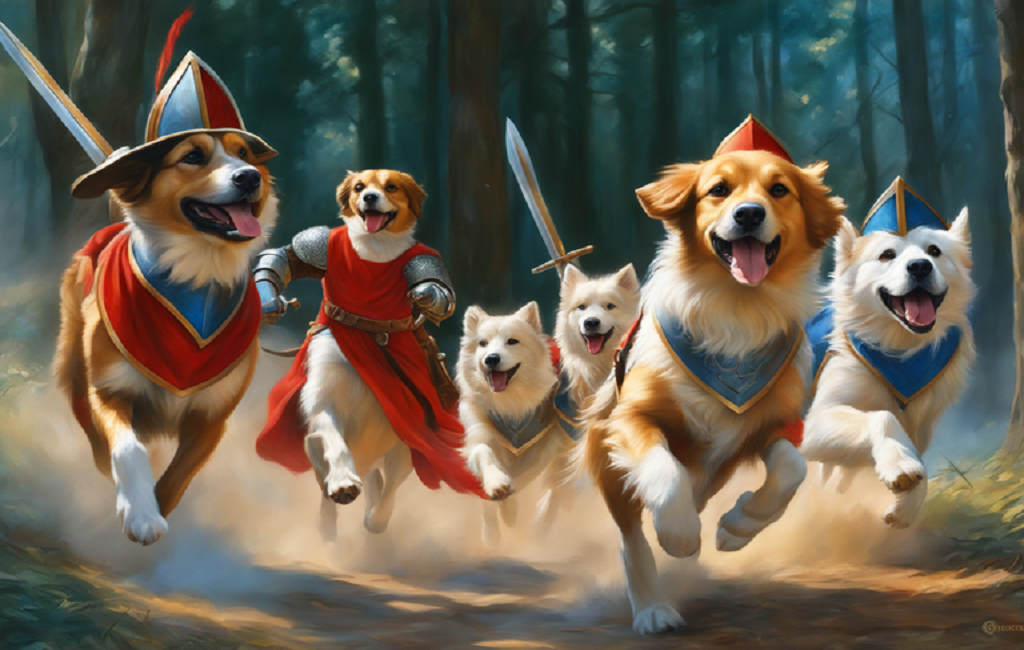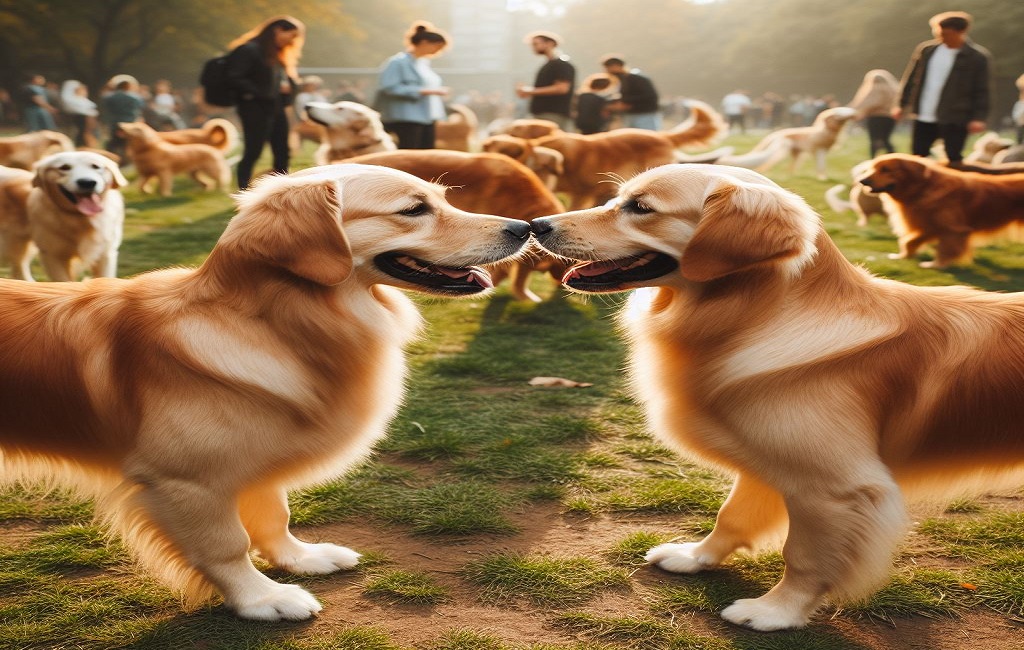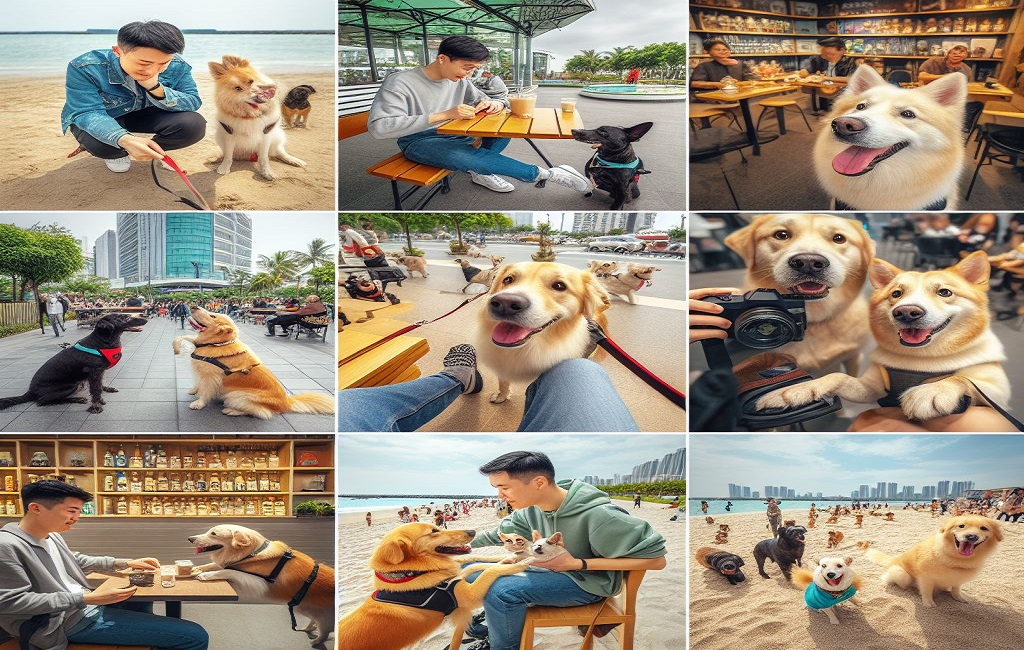Thanks for coming, pet lovers! Are you ready to bring a pet friend into your family and start an exciting new journey? Here are some tips and tricks for making sure your new dog fits in with your current pack, whether you’re taking home a puppy, adopting an adult dog, or saving a cute mutt from the shelter.
This step-by-step guide will give you expert tips and tried-and-true methods to make sure that bringing your new dog to existing pets goes smoothly and works paws-itively! Take a treat (or two) for yourself and your dog as we start this trip together. You and your four-legged friends are about to form strong ties and beautiful friendships. Let’s begin!
Understanding How Important It Is to Introduce Your New Dog to Existing Pets
It can be both exciting and scary to bring a new dog into your home, especially if you already have pets living there. You should know that this process might not always go as planned and might take some time and work. With the right plan and methods, you can successfully introduce your new dog to your other pets and make the house a nice place for everyone.

Here are some important things to remember about how important it is to introduce your new dog to other pets in the house:
- Setting up a Hierarchical Structure: In the wild, dogs live in packs with a clear order. Each dog knows their place and is treated with respect because of it. Setting up this kind of hierarchy among all of your pets, including the new one, is very important indeed. This will help keep them from fighting or having problems with who is in charge.
- Making Sure Everyone Is Safe: Safety is the most important reason to introduce your new dog to other pets in a controlled setting. This helps keep both animals from getting hurt or fighting. When dogs that don’t know each other get together without being watched, they may act aggressively, which puts both pets at risk.
- Supporting Socialization: Getting your dog to know other animals is very important for their health and growth. By slowly introducing them to other animals in a good way, you teach them good social skills like how to share room and resources, set limits, and talk to each other clearly.
- Getting rid of stress and anxiety: Adding a new pet all of a sudden to a home that already has pets can be stressful and anxious for all of the pets, not just the new pet. The right welcomes and positive feedback can help lower these feelings and make the space calm and happy for everyone.
- Building Good Relationships: Once you start bringing your new dog to your other pets slowly, you give them time to get used to each other and form good relationships. This is especially important if your cat has a history of bad interactions with other dogs.
- Making the Home Happy: The main reason for bringing your new dog to existing pets is to make the whole family happy. Taking the time to properly meet them will help them get along and build a strong bond between all of your pets.
Keep in mind that each pet is different, and their first responses may be different too. Some dogs might be more open to a new friend than others, and it might take longer for some to get along with the new dog. Keep a good attitude, be patient, and get help from a professional if you need it. Your new dog can quickly become a part of your family if you introduce them properly and make the changes slowly.
Getting ready for the beginning of Introduce Your New Dog to Existing Pets:
Planning how to introduce your new dog to your other pets is an important part of making sure the process goes smoothly. Making the introduction of a new family member can be scary for everyone, including the animals. You can set the stage for a good bond between your pets, though, if you plan ahead, are patient, and understand.
- Learn about the personalities of your pets:
Just like people, each animal has its own unique attitude. Before presenting your current pets to a new dog, you should take some time to get to know their personalities. This will help you figure out what their wants are and how they might respond to the new person.
For example, if you have an older cat that likes her own room, you might not want to bring your active dog home right away. But if you have a friendly dog that loves making new friends, he might be more than happy to play with another animal friend.
- Learn the basics of obedience:
Before letting your new dog meet your other pets, it’s important to teach it basic manners. This will help your new dog learn what is and isn’t okay to do and also show respect for other animals in the house.
You should work on orders like “sit,” “stay,” “leave it,” and “drop it” with your pet before putting them with other pets. Your pets will find these orders useful when they first meet and when they associate with each other in the future.
- Set up a place to meet that is not biased:
It’s important to pick the right place for the opening. One good place to meet is in a public area, like a park or a friend’s lawn. This will help stop the aggressive behavior that might happen if one pet thinks their space is being invaded.
Don’t bring them into either of your pets’ territory, like their home or yard, because this can lead to stress and violence.
- Use good reinforcement:
When introducing your pets to each other and when they engage in the future, positive feedback is very important. This means giving treats, praise, and love to kids who behave well. When your pets are being calm and friendly with each other, reward them to keep them doing that.

This will help your pets form good memories with each other and make them more likely to be nice.
- Bring Smells Before Sight:
Animals use smell a lot to find each other and talk to each other. Trading things that other pets have slept on, like blankets or toys, is a great way to get their smell on your new dog. This way, your other dogs will have a chance to get used to the new dog’s smell before they meet in person.
- Ask someone to help you:
When you bring in new animals, it’s always helpful to have an extra set of hands. Ask a friend or family member to help you with the introduction. This can help keep bad things from happening and let you focus on watching how your pets react.
- Slow down:
You shouldn’t rush the process of introducing pets to each other. Take things slowly and don’t push encounters. Let your pets get close to each other at their own pace, and be ready to step in if things get mean.
Additionally, you should watch how your pets interact with each other for the first few weeks until you are sure they are fine with each other.
Conclusion:
With the right planning and a slow introduction process, you can make sure that the meeting between your new dog and your other pets goes well. For the first few weeks, remember to be patient, use positive feedback, and watch how they connect with each other. You can make your new dog a welcome and loved part of the family with time, patience, and love.
How to Set Up a First Meeting in a Public Place
It can be both exciting and scary to introduce a new dog to pets that are already there. It is important to make your new dog feel happy and at home, but it is also important to think about how your other pets feel and how they interact with each other. Setting up a first meeting in a neutral place is a good way to make sure the greeting goes well.
What is an empty space?
There is a place called a “neutral space” that none of the pets feel like they fit or that is important to them. It could be a park, your yard, or even a friend’s house. The important thing is that all animals are on “equal footing” here, which means that dominance actions are less likely to happen.
Why Would You Use a Blank Space?
When you bring a new dog into the house, your other pets may act defensive, which could escalate into aggressiveness and possible fights. The first meeting should take place in a neutral area so that none of the pets feel like they are being attacked or that their territory is being threatened.
Additionally, beginning in a neutral area lets all animals connect on equal terms, without feeling the need to defend their belongings like food bowls or toys. This lowers the stress and makes it more likely that the meetings will go well.
How to Set Up Your First Meeting in a Neutral Space, Step by Step
- Select the Appropriate Place: As we already said, selecting a neutral space means finding a place that doesn’t belong only to one pet. A park that is quiet or an empty garden of a friend can be great neutral places for the first meeting.
- Select an appropriate time: Choose a time that works well for everyone. Before the meeting, make sure your current pets have had enough mental and physical activity. This will help them feel calmer and less tense.
- Bring Help: If something goes wrong, it might be helpful to have someone else with you during the meeting. If needed, this person can also help keep the dogs under control.
- Put on leashes and muzzles: To keep everyone safe, all dogs should be on leashes at the first meeting. If you are worried about violence or possible fights, teaching your new dog to wear a collar before you bring it home can add an extra layer of safety.
- Let Them Sniff Around: Once you get to the neutral place, let all the dogs look around and sniff each other from a distance. Watch what people do and how they act closely, and be ready to step in if needed.
- Controlled Interaction: Once you feel ready, you can start letting the dogs contact with each other in a controlled way by slowly moving them closer together while keeping a safe distance.
- If everything is going well: End the meeting on a good note by letting the dogs play and connect for a few more minutes before you leave.

- Repeat as Needed: If the first meeting went well, you can keep introducing the dogs in safe places until they are used to being around each other. If there were any problems, this process might need to be done more than once until all the animals are happy and at ease with each other.
When putting two new pets together, remember to always put safety first and go slowly. Your pets may need some time to get used to each other, but if you’re patient and make sure they meet the right way, they can become best friends for life.
Things to watch out for in terms of behavior during the introduction
It can be both exciting and scary to introduce a new dog to pets that are already there. Every pet owner wants their animals to get along and bond with each other. But it’s important to remember that each dog is different and may behave in different ways during the introduction process.
It’s important to pay attention to common behavioral cues and signs to make sure the introduction of your new dog and existing pets goes smoothly. The mood of each animal can be guessed by these cues, which can help you make the necessary changes for a smooth merging. When you’re introducing yourself, here are some usual signs and cues to look out for:
- Language Used in the Body
The way your pets move is one of the best ways to tell how they’re feeling. Make sure you pay close attention to how they stand, their ears, their tails, and how they hold themselves overall. Tense muscles can show fear or anger, while a relaxed stance with loose muscles shows happiness.
- Sound effects
Dogs talk to each other by making noises like barking, growling, whining, yelling, and more. It’s normal for dogs to bark or growl when they first meet someone new because they are excited or scared. But constant barking or growling could mean that one animal is uncomfortable or fighting with another.
- Wag of the Tail
Dogs aren’t always happy when their tails are moving, despite what most people think. It’s important to pay attention to how fast and how high your pet’s tail is waggling. A slow, low tail wag means the dog is being careful or scared, while a fast, high tail wag means the dog is excited.

- Looking at smells
Other animals can tell a dog about them by the smell they give off. Dogs naturally use sniffing to find out more about new smells. Dogs may sniff each other’s tails, genitalia, or even breath when they first meet to learn more about each other.
- Poising up
Dogs often use posture to talk and show who is in charge when meeting new people. They might stand tall with their ears forward, put their head on top of another dog’s back, or even jump on top of another dog. If you see someone acting aggressively, you need to step in and change their behavior.
- Getting angry
During greetings, aggression can show up in many forms, such as growls, barking, snarling, snapping, lunging, or even physical altercations like biting or fighting. If you see any fighting between the dogs when they are being introduced, you need to separate them right away and get professional help.
- Staying Away
During meetings, some dogs may choose not to play with each other. This might be because they are afraid, have had bad situations in the past, or just aren’t interested. Give them room and let them come up to each other at their own pace if one dog is trying to avoid the other.
It’s important to remember that each animal is unique, and how they act can depend on their personality and what they’ve been through in the past. As a pet owner, it’s your job to carefully watch and handle introductions and take action right away if any behaviors seem odd. With time, positive feedback, and the right training, you can help your new dog get along with your other pets and live together happily.
Advice on how to help dogs get along with each other in a good way
A new dog can be both exciting and scary when you bring it into your home, especially if you already have pets there. All animals have their own personalities, and it’s important to help them get along with each other so that everyone in the house can live in peace. Here are some tips and tricks that will help you get your new dog used to your other pets:
- Start with different areas. It’s best to give your new dog their own room to get used to their new surroundings before putting them in the same area as your other pets. A different room in the house or a set spot in the yard could work. This will also help keep any territorial problems from happening right away.
- Animals use their sense of smell a lot, so swapping things that have the scent of each animal is one way to get them to know each other before they meet in person. This could be furniture, toys, or even the pet parent’s dirty t-shirt worn outside.
- Gradual introductions are best. When it’s time to physically meet your new dog and your other pets, do it slowly and under control. Put them on opposite sides of a baby gate or door at first so they can see each other without getting into a fight.
- Use positive feedback. Training methods that use positive reinforcement can be very helpful for making pleasant links between animals when they are first met. Give both animals treats and praise every time they behave calmly or get along with each other.
- Don’t punish people. Punishing people for being rude or pushy during greetings can make things worse. Instead, take their mind off of it and get them involved in something good.
- Know your pets’ body language: Knowing your pets’ body language is important when introducing them to new people because it can help you predict any problems that might come up. If you see that one of the animals is acting scared or angry, you should step in and get their attention before things get worse.
- Watch all interactions: Until you’re sure that your new dog and existing pets can live together happily without constant supervision, you should watch all interactions between them. This could take weeks or even months, so be patient and keep an eye on how they connect with each other.
- Work out together: When dogs work out together as a pack, they can bond and form good memories with each other. By going for walks or playing together, you can help them feel like they belong.
- Give each animal the attention it needs: If you get a new pet, you should still give each animal the attention it needs so it doesn’t feel neglected or jealous.

- If you need to, get help from a professional: If things aren’t going well between your new dog and your other pets, don’t be afraid to ask a professional dog teacher or behaviorist for help. They can give you personalized information and help you make your home a peaceful place for all of your pets.
Overall, bringing a new dog to your current pets takes time, patience, and positive feedback. By following these tips and tricks, you can help your furry friends get along with each other and settle down in a peaceful home.
Dealing with Potential Challenges and Conflicts
Adding a new dog to your current pets can be very fun and beneficial for all of you. It’s important to remember, though, that while adding a new family member can be exciting, it can also cause problems and disagreements. This is especially important when bringing a new dog to pets that already live there. There are some problems that owners may face during this process that are common, even though each case is different.
Territorial behavior is one of the most common problems pet owners have when they bring a new dog home with their other pets. Dogs are usually protective, and if another animal comes into their place, they may feel threatened. When this happens, the dogs might act aggressively, like growling or barking, or they might even get into a fight.
To deal with this problem, it’s important to set clear rules and limits for all the pets concerned. To begin, keep the new dog away from your other pets. This will give them time to get used to each other’s smells before they meet in person. Do not introduce them in your home, where one pet may feel more protective over their territory. Instead, do it in a neutral place like a park or on a walk.
Resource guarding is another problem that owners often have to deal with during meetings. Some dogs are very possessive about food, toys, or even their territory, which can cause problems between other pets that live in the same area. To keep this from happening during the first few introductions, make sure that all the resources are spread out evenly and keep a close eye on the conversations. If fights do happen, use a toy or treat to take the dogs’ attention away from the bad thing and onto something good.
When you meet someone new, it’s also important to pay close attention to their body language. If either dog is acting aggressively, they might stand straight, raise their fur, or stare directly at you. If you see any of these things happening, take the dogs apart right away and try again when they are both calm and relaxed.
Finally, it’s important to keep in mind that every animal has a personality and past experiences that may affect how they act around a new dog. In other words, it might take longer for some pets to get used to the new person than for others. Allow each pet the time it needs to get used to the new situation. Be patient and understanding.
After all is said and done, introducing a new dog to existing pets can be both fun and difficult. By setting clear rules, keeping a close eye on interactions, and giving each pet time and patience, owners can help avoid problems and make their home a peaceful place for all of their furry friends.
Setting Limits and Rules for Pets Living Together
People who already have pets may find it both exciting and scary to bring a new pet into their home. Setting limits and rules for pets that live together is one of the most important things that can be done to make sure the integration goes smoothly. These limits and rules will help all the animals know what is expected of them and make the living space peaceful.
- Figure out who is in charge: Before introducing your new dog to your other pets, you should figure out who is in charge of the pack. This order helps keep the animals from fighting with each other. If you already have an alpha pet, make sure the new dog meets the old one first and gets extra attention during this time.
- Introduce in a neutral space: When it’s time to introduce yourself, pick a neutral space, like a nearby park or a room in your house that they haven’t been in before. If you bring them together in their favorite spot, they might get territorial.
- Keep interactions short and under close supervision: When pets meet for the first time, keep interactions short (about 10 to 15 minutes) and under close supervision to avoid any bad behavior or accidents. As they get used to each other, slowly extend the time they spend together.
- Set up separate feeding areas: To keep your pets from fighting over food, it’s important to set up separate feeding areas for each one. Aside from that, this gives each animal its own space where it can eat safely.
- Set a specific time to play: Just like with feeding, set a specific time for each pet to play so they can play without any fighting or competing. This also helps make sure that every animal gets the same amount of stimulation and attention.
- When your pets are in the same room or playing with each other: Make sure to praise and reward them for good behavior. This helps them form a stronger bond by reinforcing good memories of each other.
- Set limits with body language: Training is important for setting limits and rules, but sometimes body language is a better way to tell your pet what the rules are. One example is if one pet is being too rough during playtime. Say “no” firmly and separate them from each other.
- Respect personal space: Just like people, pets need a place of their own to go when they need to relax. Make sure that each animal has its own space where it can rest or spend time alone without the other animals.
- Maintain routine activities: Keeping up with routine activities like feeding times and walks will help keep pets from fighting as they get used to living together.
- Get professional help if you need it: If your pets are still fighting after you’ve tried everything, talk to a professional trainer or behaviorist. They can give you specific tips and techniques that will help your pets get along better.
Setting rules and boundaries for pets that live together takes time, patience, and consistency. By following these tips and paying attention to how your pets act, you can make your home a calm place where all of your pets can do well.
Monitoring and help that didn’t stop after the introduction
Once you’ve successfully introduced your new dog to your other pets, you should keep an eye on them and help them through the transition period. Taking these steps will help the new dog get used to your home and keep the relationships between all of your pets friendly.

Here are some suggestions for keeping an eye on things and helping out after the introduction:
- Watch how they interact: Keep an eye on how your new dog interacts with your other pets on a regular basis. Keep an eye out for any signs of stress or disagreement, like growling, snapping, or body language that seems hostile. If you see them doing something bad, you should step in right away and get their attention on something good.
- Separate Meals: It’s best to keep feeding your other pets and the new dog at different times during meals. This can stop fights over food or competition for resources. Feeding them in different areas also gives each pet space and lowers the chance of fights.
- Give Dogs Personal Space: Dogs need personal space just like people do. For each pet, make sure they have their own bed or space where they can go when they need to be alone. This can also help if one pet gets too excited when the other one comes around.
- Watch Over Playtime: It’s good for all pets to get along and play together, but you should watch over their playtime at first. In this way, you can step in if needed and stop any rough play that could turn into fights.
- Keep training: When you’re training a new dog, it’s important to be consistent. Keep working on basic commands for obedience and any behavior problems that come up. This can help them see you as the pack leader and keep them doing good things.
- Give Each Pet the Same Amount of Attention: Be sure to show each pet the same amount of love and attention. If your other pets feel ignored, they might be envious or angry at the new dog. You should spend time alone with each pet to get to know them better and strengthen your bond with them.
- Get Professional Help: If you can’t handle how your pets interact with each other, don’t be afraid to get help from a certified dog trainer or behaviorist. They can give you personalized advice and help your pets get along better with each other.
By using these tips, you can keep an eye on how your pets interact with each other and help them get used to the new environment. Your new dog will quickly become a part of your family if you are patient, consistent, and love them.
Learning How to Make Your Pet Family Get Along
Getting your current pets used to a new dog can be stressful and take a lot of time, but it is necessary for the overall happiness and harmony of your pet household. After following the step-by-step instructions in this article, you should have everything you need to successfully introduce your new dog to your other pets.
You should keep in mind that each pet is different and may react differently to the process of meeting new pets. It might take longer for some animals to get used to it, while others might be fine right away. Being patient is very important during the whole process, and you should never force pets to interact.
To make sure the move goes smoothly, keep an eye on how your new dog interacts with your other pets. Look for signs of stress or aggression and deal with them right away, even if that means separating the animals. Remember that you can change any bad behavior with the right training and time.
While this is going on, keep giving each animal your full attention, love, and care. Along with making their bond with you stronger, this will also help keep them from feeling awkward or jealous.
Over time, you’ll start to notice good changes in how your pets interact with each other. Over time, they’ll get used to being around each other, play together more, and maybe even groom each other. These are all signs of successful integration!

But it’s important to remember that as a good pet owner, you have to keep up with the work of keeping your pets happy and healthy. Make sure that all the animals get the same amount of food, attention, exercise, and care. This will help keep them from competing or getting violent with each other.
By following the steps in this piece and keeping an eye on your pets all the time, you can make your home a calm and happy place for them all to live. With love, care, and proper beginnings, you can successfully nurture a peaceful pet family that all dogs can call home.

2 thoughts on “How to Successfully Introduce Your New Dog to Existing Pets”